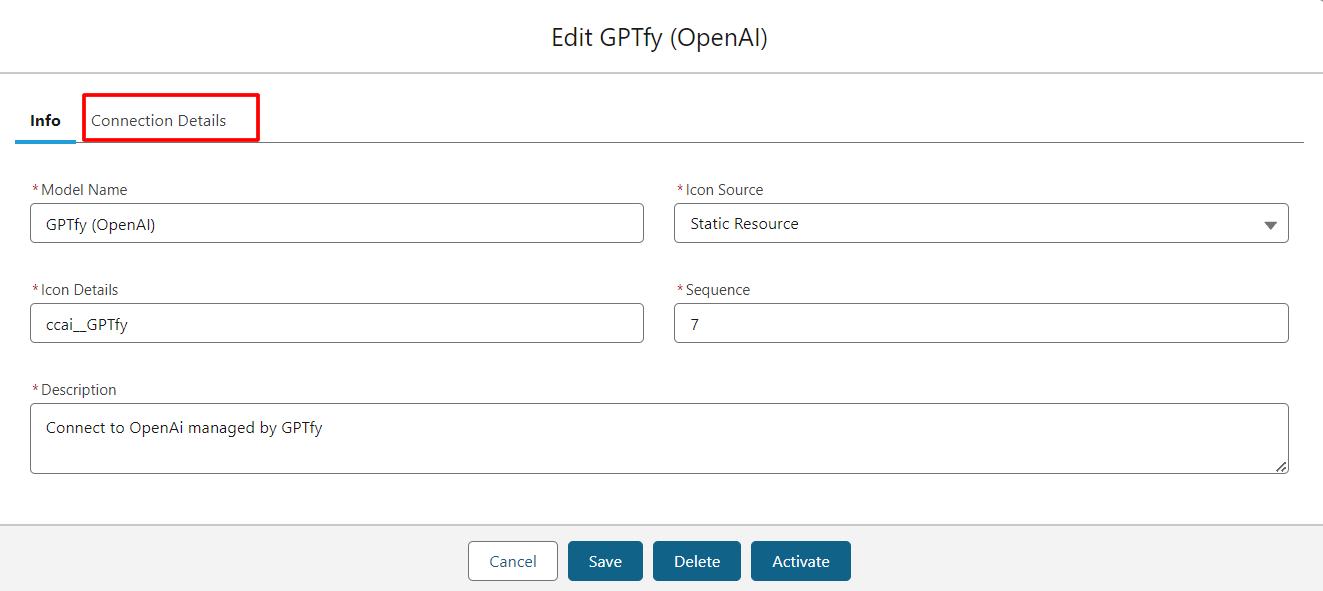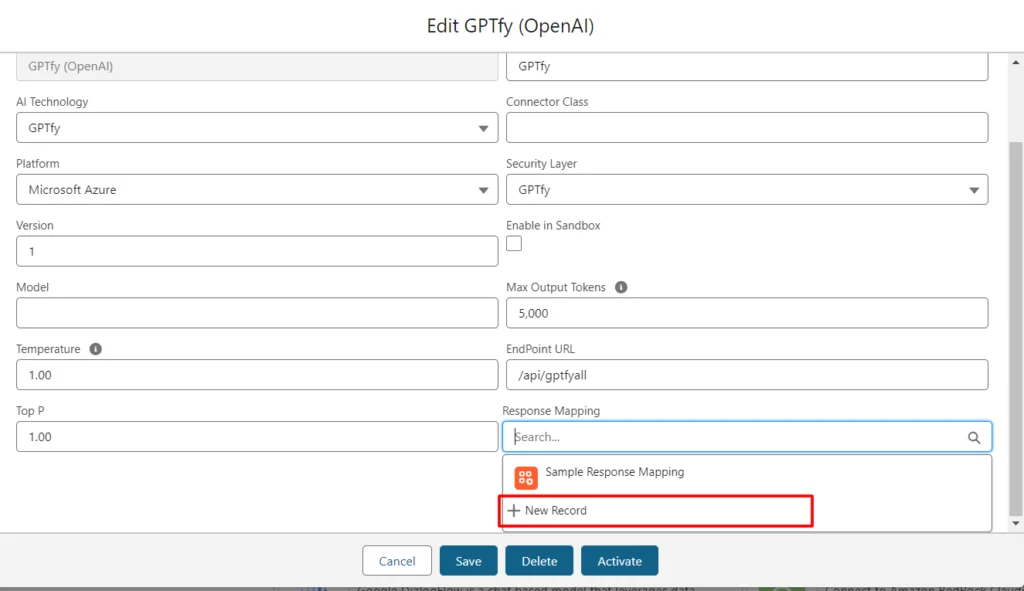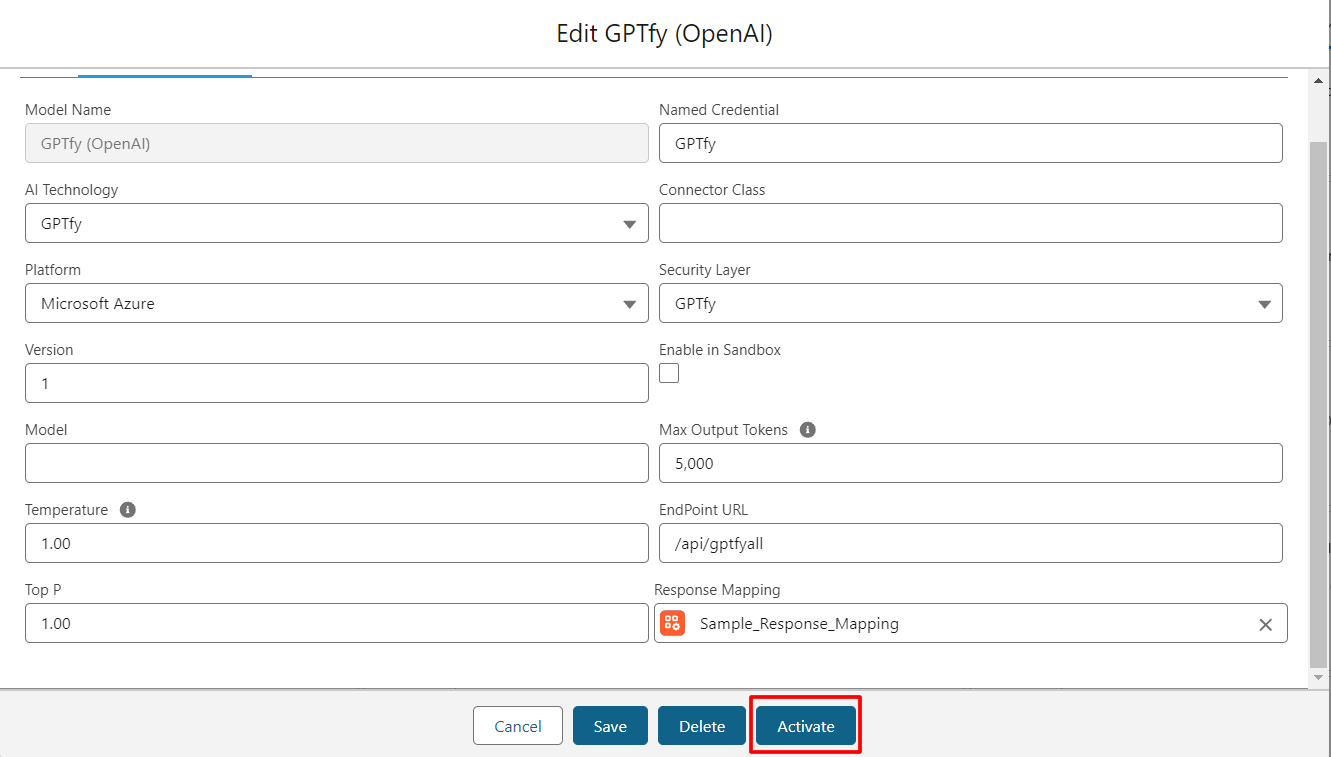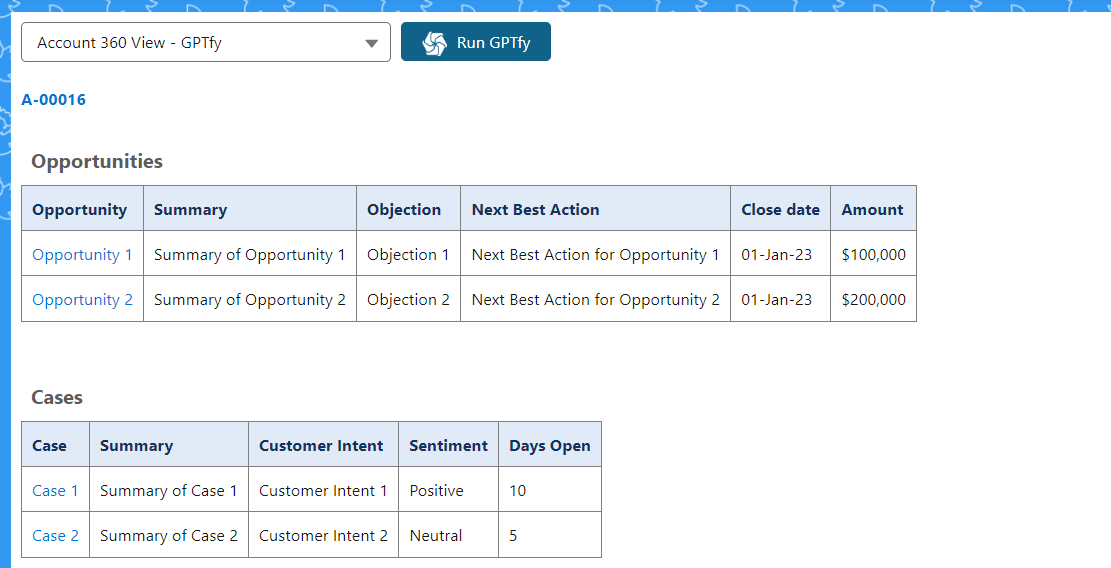Response Mapping Framework
Introduction
Response Mapping allows you to map fields from the audit response to the AI response. When creating a new AI model in GPTfy, it's essential to establish a JSON node within the connection to map fields returned by the AI to corresponding fields in your Salesforce Security Audit records. This ensures the inclusion of all AI-retrieved fields into the Security Audit object.
Example
For instance, if OpenAI provides a “Toxicity Score” and Claude offers a “Toxic Score,” a unified field named Toxicity should be created. Both the “Toxicity Score” and “Toxic Score” fields should be mapped to this unified field within the Security Audit object.
Steps to Create Response Mapping
Step 1: Navigate to the AI Model
- Go to the Cockpit.
- Click on the AI Model section.

Step 2: Create or Open an AI Model
- You can either create a new AI model or open an existing one. For this example, we’ll use GPTfy (OpenAI).
Step 3: Access Connection Details
- Open the GPTfy (OpenAI) model and go to the Tab: Connection Details.

Step 4: Create Response Mapping
- Find the field labeled Response Mapping and click Create New.

Step 5: Fill in the Required Information
- Name: Enter a name for the Response Mapping.
- Description: This is an optional field where you can provide additional details.
- AI Model: Choose from the picklist of available AI models:
- OpenAI 3.5-Turbo16K
- OpenAI 4.0 Turbo
- Google Vertex-Palm-Bison
- AWS-Bedrock-CloudeV2
- Sample Response: AI processed data from the security audit.
Step 6: Record Response Mapping
- Follow the path shown in the screenshot to record the response mapping for the AI.

Step 7: Activate the AI Model
- After creating the Response Mapping, activate the AI model.

Step 8: Run the Prompt
- You can now run the prompt using this AI model.

Step 9: Check the Audit Record
- After running the prompt, you can check the Audit Record to see the AI-generated response.
Conclusion
Once the Response Mapping is set up, the fields returned by the AI will be mapped to the appropriate nodes, and the results will be reflected in the Security Audit record as per the mapping configuration.